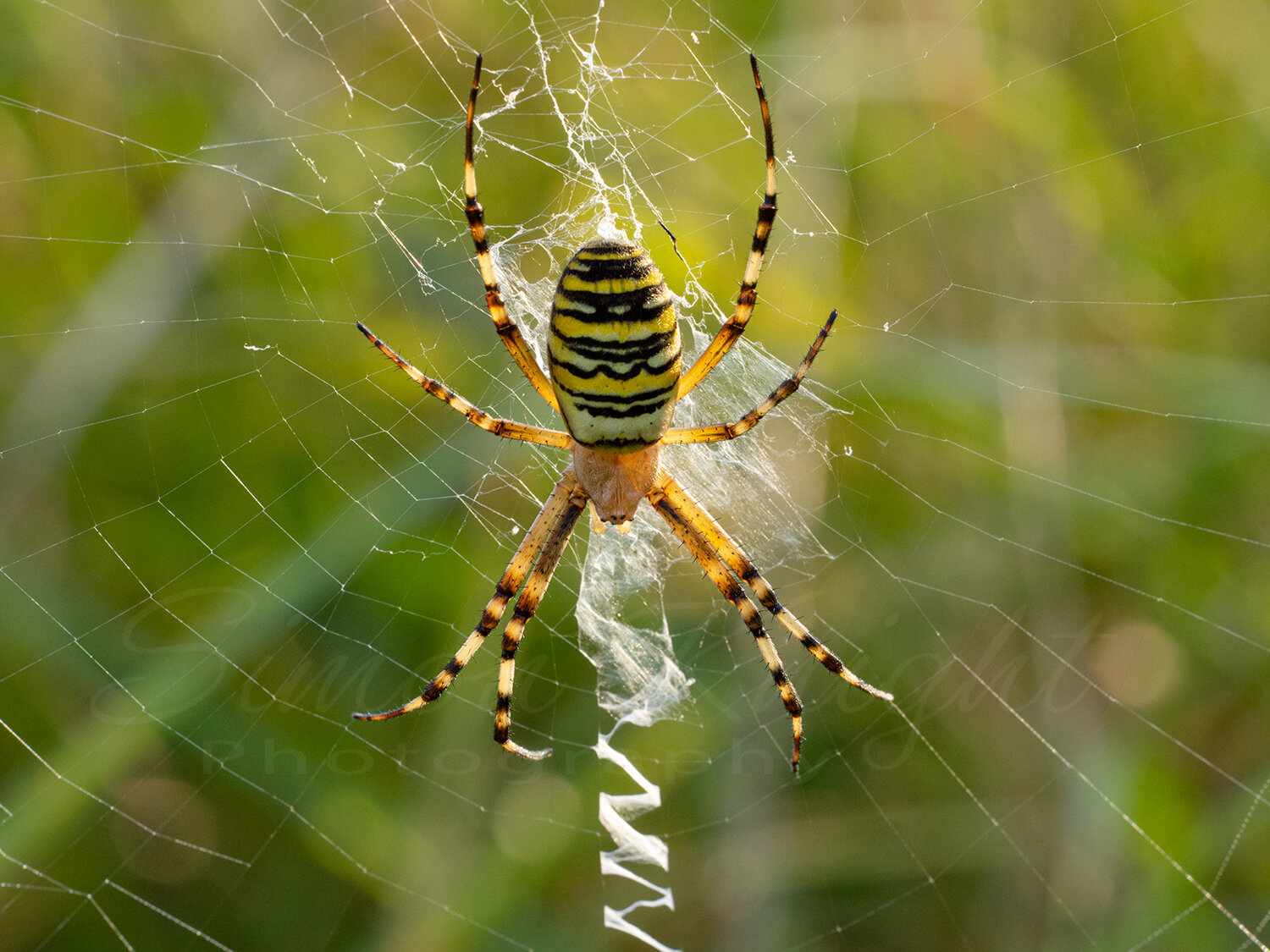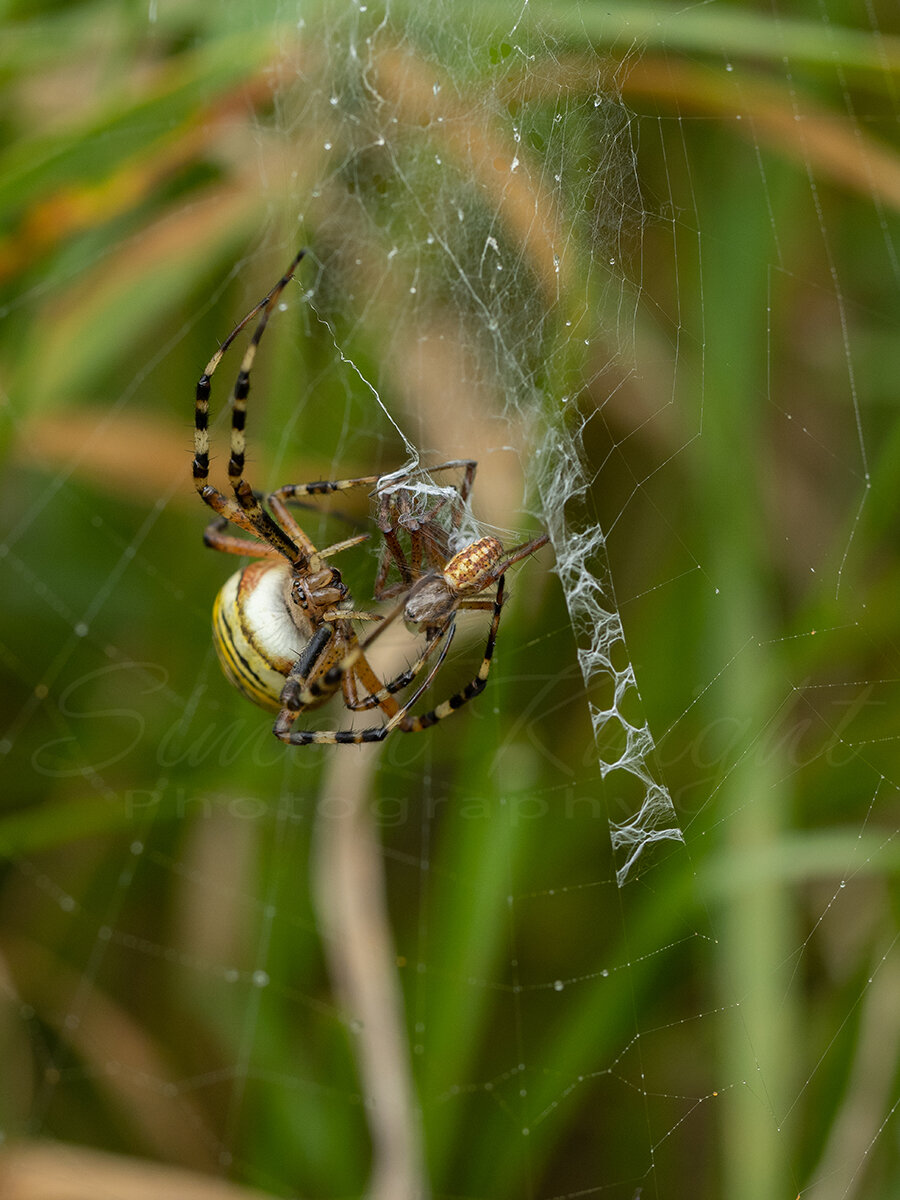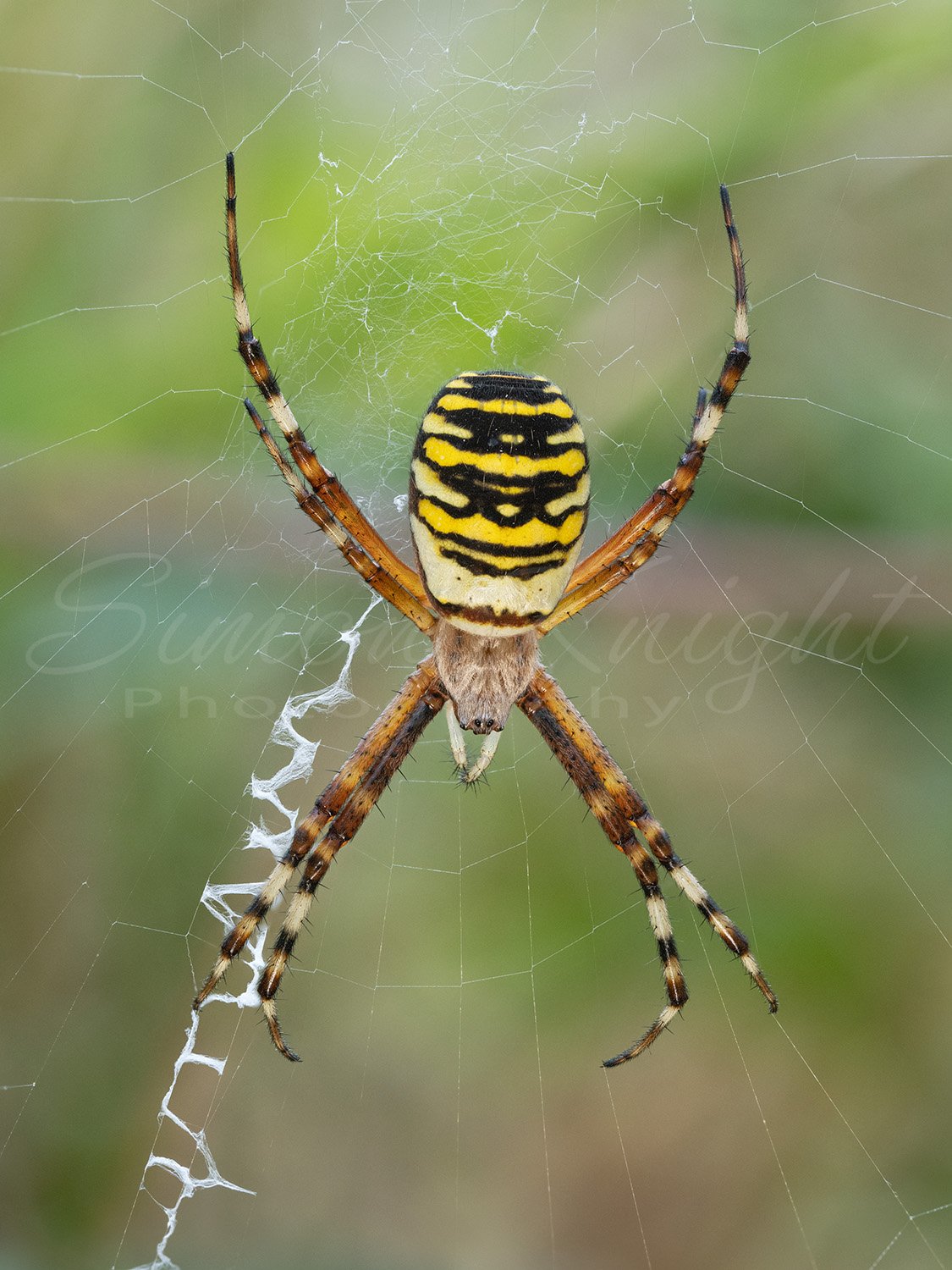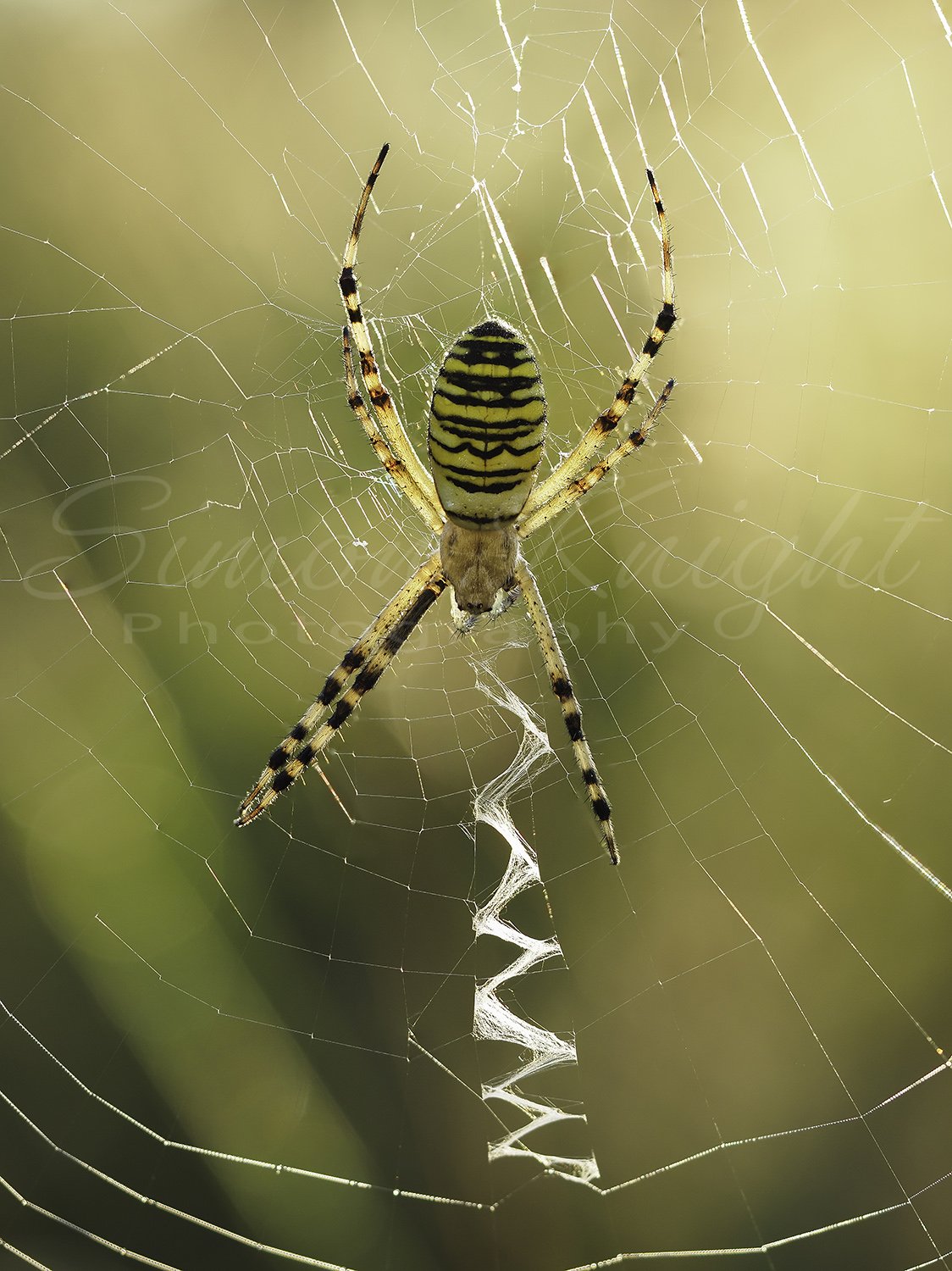
A patient hunter - the striking Wasp Spider.
Large and unmistakeable, the Wasp Spider inhabits unmanaged grassland, where it preys predominantly on grasshoppers. I will never forget my first encounter. For someone who is not completely comfortable with creepy crawlies, it was quite a shock to stumble upon such a large spider!
The female will often remain on the same web for several days, sometimes even weeks. Staying in the hub of the web above the zig-zag band of silk - the stabilimentum, she will normally only move when an unfortunate prey item stumbles into the web, or a much smaller male Wasp Spider arrives to mate. The unfortunate male often ends up as a meal after mating, with the female wrapping him in her strong silk within seconds.

The first spider I photographed in 2023. This is a focus stacked image made up from 60 separate images.

A grasshoppers providing a good meal for this large female, which was my very first wasp spider sighting.

Backlighting makes the stabilimentum highly visible.

It's not often you find a female away from the hub of the web.

One of the largest specimens I found in 2021.

The size difference is noticeable between the sexes as this female wraps the male in silk after mating.

Evening light catches this female who had made her web on the edge of some brambles.

A young female yet to moult into her adult colours.



The markings on the abdomen are unique to each spider.

Sinking her fangs into a freshly caught meal.

A beautifully lit specimen on an August morning.

Single strands of silk are used for the web.

Multiple strands of silk is used during the construction of the stabilimentum.

This female has unfortunately lost a leg.

Perfectly positioned web for intercepting grasshoppers and crickets.

Beautifully marked.

Dewy mornings make the spiders much easier to find as the sun picks out the water droplets on the web.
